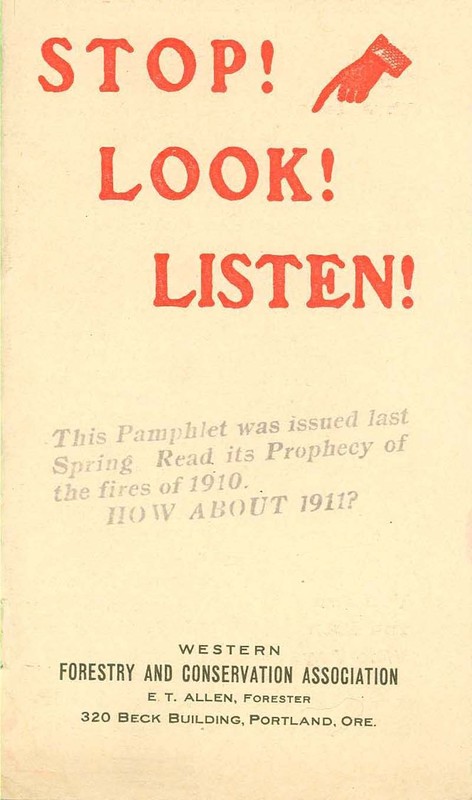Aftermath of the 1910 Fires
Over the next nine days the fire continued to burn, destroying millions of acres of timber. The ensuing smoke darkened the sky over cities as far away as Denver, Colorado, and Duluth, Minnesota. Finally, on the morning of August 29, 1910, the temperature dropped to a cool 26 degrees and a light snow began to fall on the blaze. The cooler temperatures brought frost and rain, and by September the blaze began to subside.
In the aftermath of the Big Burn, land management agencies and timber companies began a new focus on fire prevention and planning. In the years that followed, public relations and pamphlets became a vital tool in the fight against wildfire.


